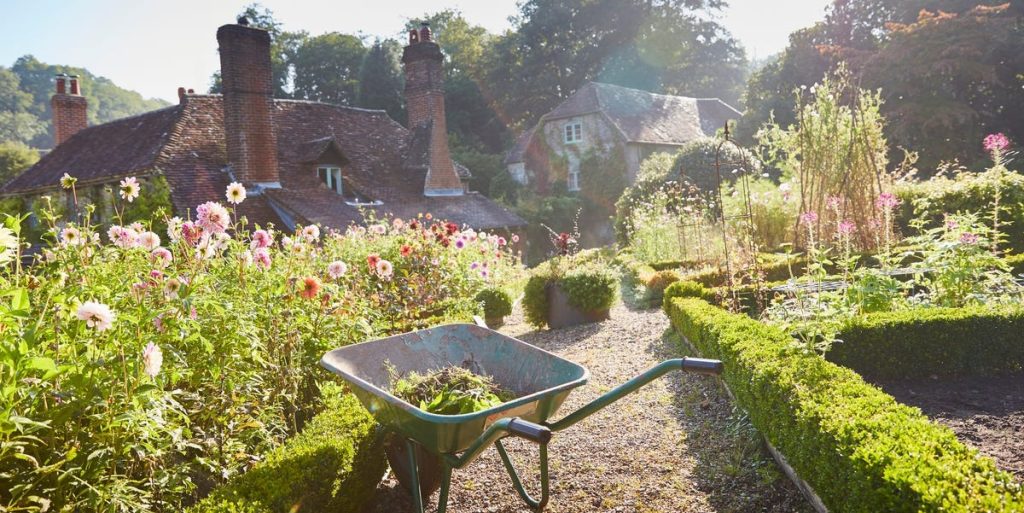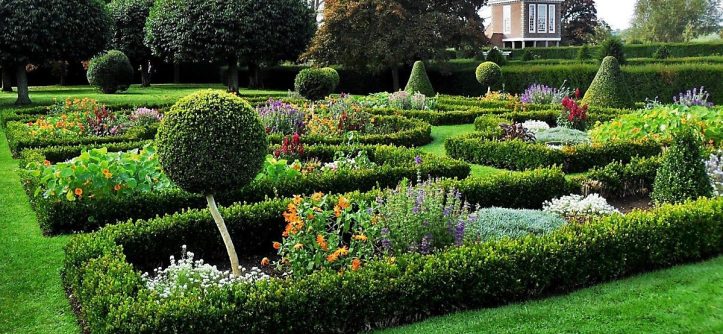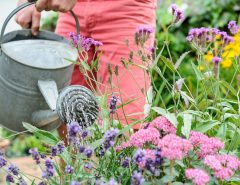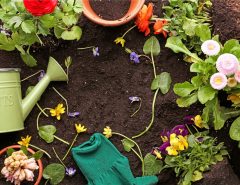Picture a garden bursting with vibrant roses, winding paths, and fragrant herbs, evoking timeless charm. Traditional English gardens are making a stunning comeback in 2025, captivating homeowners with their romantic, lush aesthetic. These gardens, rooted in centuries of history, blend structured elegance with natural beauty. Recent data from the National Trust shows a 35% increase in visitors to historic English gardens like Sissinghurst Castle, signaling a renewed fascination. Restoring one in your backyard isn’t just a trend; it’s a way to create a serene, sustainable oasis. This article unveils expert tips to revive the classic English garden, offering practical steps and insights to transform your outdoor space into a picturesque haven.
Understanding the Essence of Traditional English Gardens
Traditional English gardens balance formality and whimsy, drawing from 18th-century designs that rebelled against rigid French styles. They feature meandering paths, overflowing flower beds, and architectural elements like arbors. Garden historian Jenny Rose Carey notes that these gardens reflect a “harmonious coexistence with nature.” Unlike manicured lawns, they embrace controlled chaos, with plants like foxgloves and delphiniums spilling over edges. A 2023 survey by Homes & Gardens found 68% of gardeners prefer this organic look over modern minimalism, citing its calming effect. However, critics argue the style requires high maintenance. Logically, the mix of perennials and self-seeding annuals reduces long-term effort, as plants naturally fill gaps.

Assessing Your Space for Restoration
Before diving in, evaluate your yard’s potential. Measure the area to determine layout possibilities, considering sunlight and soil type. English gardens thrive in diverse climates, but plant choices vary. For instance, lavender suits dry, sunny spots, while hostas prefer shade. The Royal Horticultural Society reports 72% of UK gardeners test soil pH before planting, ensuring optimal growth. Small spaces can adopt cottage-style elements, like vertical climbers, while larger yards suit sweeping lawns. Some argue small gardens limit design scope, but creative use of containers and trellises counters this. Map your space using a grid, placing focal points like statues centrally for balance.
Choosing the Right Plants for Authenticity
Plant selection defines the English garden’s charm. Roses, particularly climbing varieties like ‘Gertrude Jekyll,’ are non-negotiable for their fragrance and romance. Pair them with perennials like peonies and annuals like cosmos for continuous blooms. A 2025 HGTV report highlights that 80% of English garden enthusiasts prioritize roses for their timeless appeal. Native plants, such as hardy geraniums, attract pollinators, supporting biodiversity. Critics warn that non-native roses may struggle in harsh climates, but hardy hybrids thrive in USDA zones 5-11. Group plants in drifts for visual impact, repeating colors like purples and pinks to create rhythm, as advised by designer Tom Stuart-Smith.
Incorporating Structural Elements
Hardscaping adds structure to the garden’s organic flow. Winding gravel paths or stone steps guide visitors through lush beds, while arbors draped with clematis create vertical interest. The National Trust notes that 60% of historic gardens feature low boxwood hedges for defined “rooms.” Some gardeners find formal hedges too rigid, but softer alternatives like lavender mimic the effect with less upkeep. Install a bench or pergola as a focal point to invite relaxation. Use natural materials like wood or stone to maintain authenticity, avoiding concrete, which clashes with the rustic aesthetic. These elements enhance functionality and charm, making the garden a true retreat.
Creating Lush, Overflowing Borders
Borders are the heart of traditional English gardens, packed with dense, colorful plantings. Layer tall plants like delphiniums at the back, with shorter lavender or salvia in front. A 2024 Fine Gardening study found that 75% of gardeners achieve fuller borders by planting closely, reducing weeds. Critics argue this density invites disease, but proper spacing and air circulation mitigate risks. Incorporate fragrant herbs like rosemary to engage the senses, as recommended by The English Garden magazine. Allow plants to spill over paths for a romantic, untamed look. Regular deadheading ensures continuous blooms, keeping borders vibrant from spring to autumn.
Adding Whimsical Focal Points
Focal points elevate the garden’s personality. A stone statue, urn, or birdbath draws the eye, creating visual intrigue. The English Garden magazine suggests that 65% of readers prefer subtle decor like weathered planters over modern ornaments. Some argue focal points distract from natural beauty, but strategically placed, they enhance it. For example, a rose-covered arbor at a path’s end invites exploration. Water features, like a small pond, add serenity and attract wildlife. Place seating near these elements to encourage lingering. Choose classic designs to maintain the garden’s historical charm, ensuring cohesion with the overall aesthetic.
Maintaining Your English Garden
Restoration isn’t complete without a maintenance plan. Regular pruning keeps roses and hedges tidy, while mulching retains moisture. A 2025 Better Homes & Gardens report states that 70% of cottage garden owners spend under 5 hours weekly on upkeep due to self-seeding plants. Critics highlight the initial effort required, but choosing low-maintenance perennials like catmint reduces workload. Water deeply but infrequently to promote strong roots. Monitor for pests like aphids, using natural remedies like neem oil to avoid chemicals. Seasonal tasks, such as bulb planting in autumn, ensure year-round interest, making maintenance manageable and rewarding.
Embracing Sustainability in Design
Sustainability enhances the garden’s appeal. Native plants and pollinator-friendly blooms like foxgloves support local ecosystems. The National Trust reports a 40% rise in wildlife-friendly gardens since 2020, reflecting eco-conscious trends. Some worry that native-only gardens lack variety, but mixing natives with hardy exotics balances biodiversity and aesthetics. Use rainwater harvesting for irrigation, reducing water waste. Avoid synthetic fertilizers, opting for compost to enrich soil naturally. These practices align with the English garden’s ethos of working with nature, creating a sustainable, thriving space that benefits both you and the environment.
Featured Snippet: What Are the Key Elements of a Traditional English Garden?
A traditional English garden combines structure and whimsy. Key elements include lush borders with roses, peonies, and foxgloves, winding paths of gravel or stone, and architectural features like arbors or benches. Low hedges, such as boxwood, create “rooms” for spatial definition. Fragrant plants and self-seeding annuals ensure continuous blooms, while focal points like statues add charm. Sustainability, through native plants and natural materials, enhances eco-friendliness. These elements create a romantic, timeless aesthetic that balances order with natural beauty, adaptable to any yard size.
FAQs About Traditional English Gardens
What defines a traditional English garden?
It blends formal structure with informal planting, featuring roses, winding paths, and architectural elements like arbors.
Can I create an English garden in a small space?
Yes, use containers, vertical climbers, and compact plants like lavender to maximize space while maintaining charm.
Which plants are best for an English garden?
Roses, foxgloves, delphiniums, peonies, and herbs like rosemary create authentic, vibrant borders.
How much maintenance does an English garden require?
About 3-5 hours weekly, reduced by choosing self-seeding annuals and low-maintenance perennials.
Are English gardens eco-friendly?
Yes, incorporating native plants and sustainable practices like rainwater harvesting supports local ecosystems.
What materials should I use for paths?
Opt for natural materials like gravel or stone to maintain the garden’s rustic, authentic aesthetic.
How do I choose a focal point?
Select classic elements like stone statues or water features, placed strategically to draw the eye.
Releted Topics: Water-Wise Gardening Tips Every Canadian Should Know
Final Thought
Reviving a traditional English garden transforms your backyard into a romantic, timeless retreat. With careful planning, authentic plants, and sustainable practices, you can create a space that captivates and soothes. Start small, embrace the process, and watch your garden flourish over time.
Call to Action: Ready to restore your own English garden? Share your plans or progress in the comments below, or visit The English Garden for more inspiration. Begin today and cultivate your dream oasis!
References:
- The English Garden: https://www.theenglishgarden.co.uk
- National Trust: https://www.nationaltrust.org.uk
- HGTV: https://www.hgtv.com





Leave a Reply